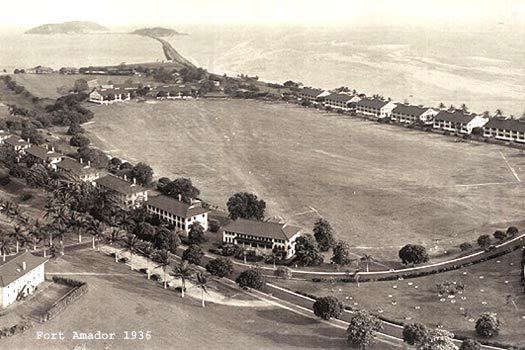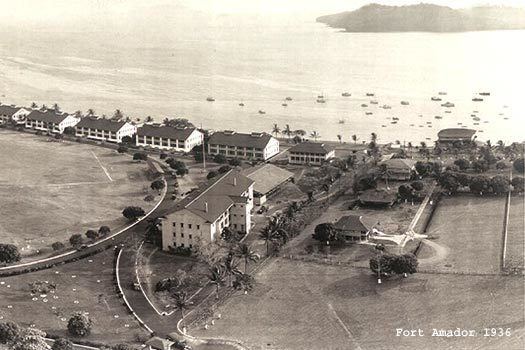Similar Bridge of the Americas, Causeway Islands, Amador Causeway, Miraflores, Gatun Lake | ||
Fort amador causeway de panama enero 2012
Fort Amador (Spanish: Fuerte Amador) and Fort Grant were former United States Army bases built to protect the Pacific (southern) end of the Panama Canal at Panama Bay. Amador was the primary on-land site, lying below the Bridge of the Americas. Grant consisted of a series of islands lying just offshore, some connected to Amador via a causeway. Fort Sherman was the corresponding base on the Atlantic (northern) side. All of the forts were turned over to the Republic of Panama in 1999, and the area is now a major tourist attraction.
Contents
- Fort amador causeway de panama enero 2012
- United states army headquarters at fort amador in panama hd stock footage
- History
- Armament
- References

United states army headquarters at fort amador in panama hd stock footage
History

The offshore islands had always been considered excellent defensive grounds and were long visited by English pirates. Sir Francis Drake, Captain Cook, and Henry Morgan all used Taboga and Perico as refuges after raiding Spanish galleons. It was here that then-Captain Ulysses S. Grant ended his cross-Panama march in 1852.

During the construction of the Panama Canal, notably the Culebra Cut, waste material was dumped in a mangrove bush then known as the "Balboa dump". As the work progressed, the dump was backfilled to create a large breakwater, which was later extended to the nearest of the offshore islands, Naos. This work was completed in 1912, and the military reservations were given their official names that year. Fort Amador is named for Manuel Amador Guerrero, the first president of Panama, while Fort Grant was named to commemorate Grant's earlier crossing to that point.

The two forts initially claimed only about 70 acres (28 ha) of land, but this expanded over the years to over 344. Amador was the primary infantry and support area, and grew to include a rather prominent "tank farm" for fuel storage. Grant was used primarily for naval defence, and included a number of large batteries on the various islands. To supply them, the causeway was extended to connect from Naos to the other nearby islands, Culebra, Perico, and Flamenco, all of which had batteries of various sizes. Grant also included the nearby unconnected islands of San Jose, Panamarca, Changarmi, Tortolita, Torola, Taboga, Cocovieceta, Cocovi, and Venado.
Armament
Fort Amador was initially armed with two batteries, each of two six inch disappearing guns. Batteries Birnie and Snith, begun in 1913, were completed in1917. They remained in service until 1943, when the guns were removed, and the structures buried. The area was then used for housing. A 90mm Anti-Motor Torpedo Boat (AMTB) Battery replaced them in 1942; it, too, was disarmed and buried in 1948.

